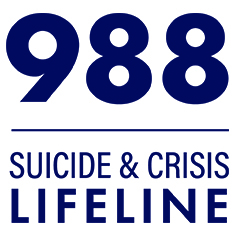Systems of Care for Suicide Prevention: Changing the Story
October 06, 2011

I would like to occasionally give the readership a chance to hear from some of the wonderful staff we have serving SPRC stakeholders. To this end, for this month I’d like to introduce Lisa Capoccia, who is a project coordinator with our team working to advance provider initiatives in suicide prevention. -Jerry
Last April, with the assistance and support of SAMHSA, the American Association of Suicidology, and the University of Michigan, SPRC released the Continuity of Care for Suicide Prevention and Research report, authored by Dr. David Knesper. In it, Dr. Knesper paints a complete picture of the issues and practices for assisting suicide attempt survivors in emergency departments (EDs) and inpatient psychiatry units.
Just a few months into my then-new position as project coordinator for SPRC’s Provider Initiatives, the report helped orient me to the challenges and opportunities of focusing suicide prevention efforts around EDs.
Fast forward to last month, when I attended the Emergency Nurses Association (ENA) annual conference. I was there to connect with ENA staff, sit in on behavioral health sessions, and identify ways SPRC and ENA might partner to advance suicide prevention in the ED. I had some questions going in: How do ED nurses view suicidal patients? How do they define quality care for this population? Do they have all the tools they need to provide it?

I got answers, and then some. If you want to know how people in distress are faring in the context of state and federal budget cuts and shrinking local behavioral health capacity, ask an ED nurse. Their stories reflect solution-oriented providers working in severe crisis mode. Their stories brought the figures in Dr. Knesper’s Continuity of Care report to life.
Emergency nurses know firsthand what happens when suicidal individuals can’t or don’t access behavioral health services, crisis services, or other local supports they need. Many wind up at the ED—a setting not really designed to calm or soothe—amongst providers whose professional training likely emphasized emergency treatment of physical acute presentations over behavioral health emergencies. Beyond that, if no inpatient beds are available (because standard practice is to admit to inpatient units) suicidal patients are held hours and sometimes days (yes, days) in the ED without treatment until a bed opens up. For many, when they leave, that’s the end of their care continuum.
We need a different story here.
Several organizations, including SPRC, have tools and resources on hand for EDs and other providers to make suicide prevention care standard practice. But providing sound care inside the ED will only go so far if patients don’t get follow-up care once they leave.
The good news: suicide prevention stakeholders, new and old, are tackling this problem, working across sectors, and making changes. The National Suicide Prevention Lifeline’s Crisis Center Follow Up program is a perfect example. The National Action Alliance for Suicide Prevention’s new report Suicide Care in Systems Framework is another. The report makes seven recommendations to build suicide prevention capacity among health and behavioral health care providers. I was most inspired by its core value of continuity of care and shared service responsibility which acknowledges that building strong linkages between health, behavioral health, crisis response, and other community services may be as important as improving care in any one setting if we want to see population-level improvements.
At SPRC, we’re collecting stories of efforts to shore up local behavioral health care systems and improve continuity of care for suicidal individuals. We want to know what’s working, what’s not, and who else—besides emergency nurses, for example—we need to be listening to. Get in touch—we want to hear from you!
